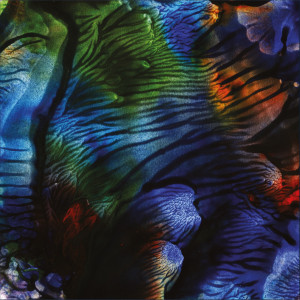 Stretching jazz in different directions is a common goal of the members of the Marthe Lea Band, and this Norway-based quintet certainly does just that on its sophomore date Herlighetens Vei. With sounds and influences as wide-ranging as Ugandan and Ethiopian instruments and beats, European classical music, American jazz and rock, and of course Nordic motifs, this disc follows strongly on the path of the band’s 2021 debut, the critically regarded Asura.
Stretching jazz in different directions is a common goal of the members of the Marthe Lea Band, and this Norway-based quintet certainly does just that on its sophomore date Herlighetens Vei. With sounds and influences as wide-ranging as Ugandan and Ethiopian instruments and beats, European classical music, American jazz and rock, and of course Nordic motifs, this disc follows strongly on the path of the band’s 2021 debut, the critically regarded Asura.
The French jazz magazine Citizen Jazz in reviewing that first album particularly noted Lea’s “ability to hold disparate idioms together, to mix a whole bunch of influences (whether musical or not, moreover) in the crucible of her own personality, of her own history, to bring out a great personal and extraordinary whole, a fresh and singular music which belongs only to herself.” Couldn’t have said it better myself, with regard to Herlighetens Vei, which is a sonic world unto itself. As soon as you think you know where this album is going, it changes course yet again.
The first and title track “Herlighetens Vei” (named for the street where Lea lives) means The Way of Glory, but they also call it Holiday Song; it reflects the joy of leaving the city and going to the country, finding peace and community there. The piece’s rhythmic groove, laid down by bassist Egil Kalman and drummer Hans Hulbækmo, smacks of Ethiopian jazz, as does the woozy melody as laid down individually and then more or less in unison by Lea on tenor sax, Andreas Røysum on bass clarinet, and Hans P. Kjorstad on fiddle. Yet somehow the piece as a whole retains a Nordic identity.
What first caught my eye about this album was the promise of not just that bass clarinet, but also a contra-bass clarinet, also played by Røysum. It shows up immediately as a quiet, buzzing drone on the second track “Springar fra Rollag” (the springs of Rollag – a municipality in southeastern Norway where Lea lives or lived.) The tune and rhythm here are much like a Nordic folk dance, the melody carried on fiddle, flute and synth. The contra-bass clarinet actually participates in the melody of the clever “Ayumi,” in which the band members chant the catchy song’s Japanese lyrics, created by Lea for pianist Ayumi Tanaka, with whom Lea appeared in a trio with drummer Thomas Strønen on his 2021 ECM album Bayou.
Throughout the album Lea and crew blend African, Asian and Middle Eastern rhythms made by a variety of percussion instruments with melodic strains of jazz and Nordic folk. “Låvebængar,” contributed by fiddler Kjorstad, gives Røysum an opportunity to soar on a klezmer-like melody with the soprano clarinet, over a rhythmic base that (to my ear) combines African and Balkan elements. One exception to the percussive nature of the album is the contemplative piano piece “Gurdjieff til Gurdjieff” by the 19th century European philosopher George Gurdjieff. Violin, bass clarinet, and piano play the somber melody in unison, which is delightful. Gurdjieff’s message of pan-human spirituality and the need for awakening resonates with all of Lea’s music on Herlighetens Vei. As Lea says, “The music is solemn, but not self-celebratory. It wants to be felt, not understood.”
There’s more vocal music here than I expected, including my favorite, the lovely “Disene” (The Mists), which opens with Lea singing a lilting tune in nonsense syllables and accompanied by the Ugandan harp called udungu – and many of the rest of the ensemble join in luscious vocal harmony, while flute and fiddle contribute improvised passages.
As is common, the music here gets more avant garde or “experimental” in the second half, with lots of freely improvised percussion and some of that on piano, flute, etc. The low clarinets continue to make subtle contributions here and there, too, which makes me happy! All in all, Herlighetens Vei is highly recommended for adventurous listeners and those who appreciate Nordic and other types of World music. Highlights: “Herlighetens Vei,” “Låvebængar,” “Disene.”
(Motvind, 2023)
